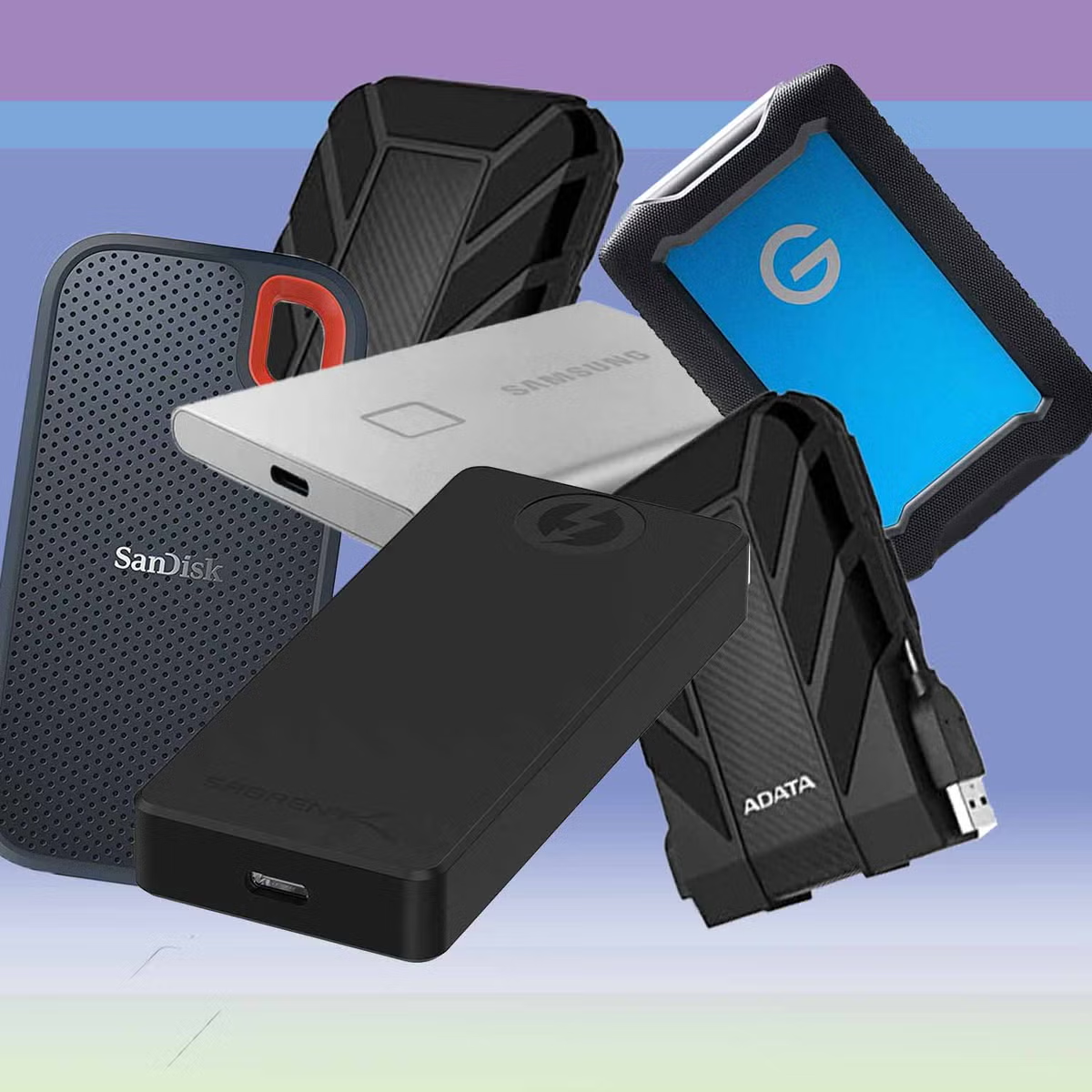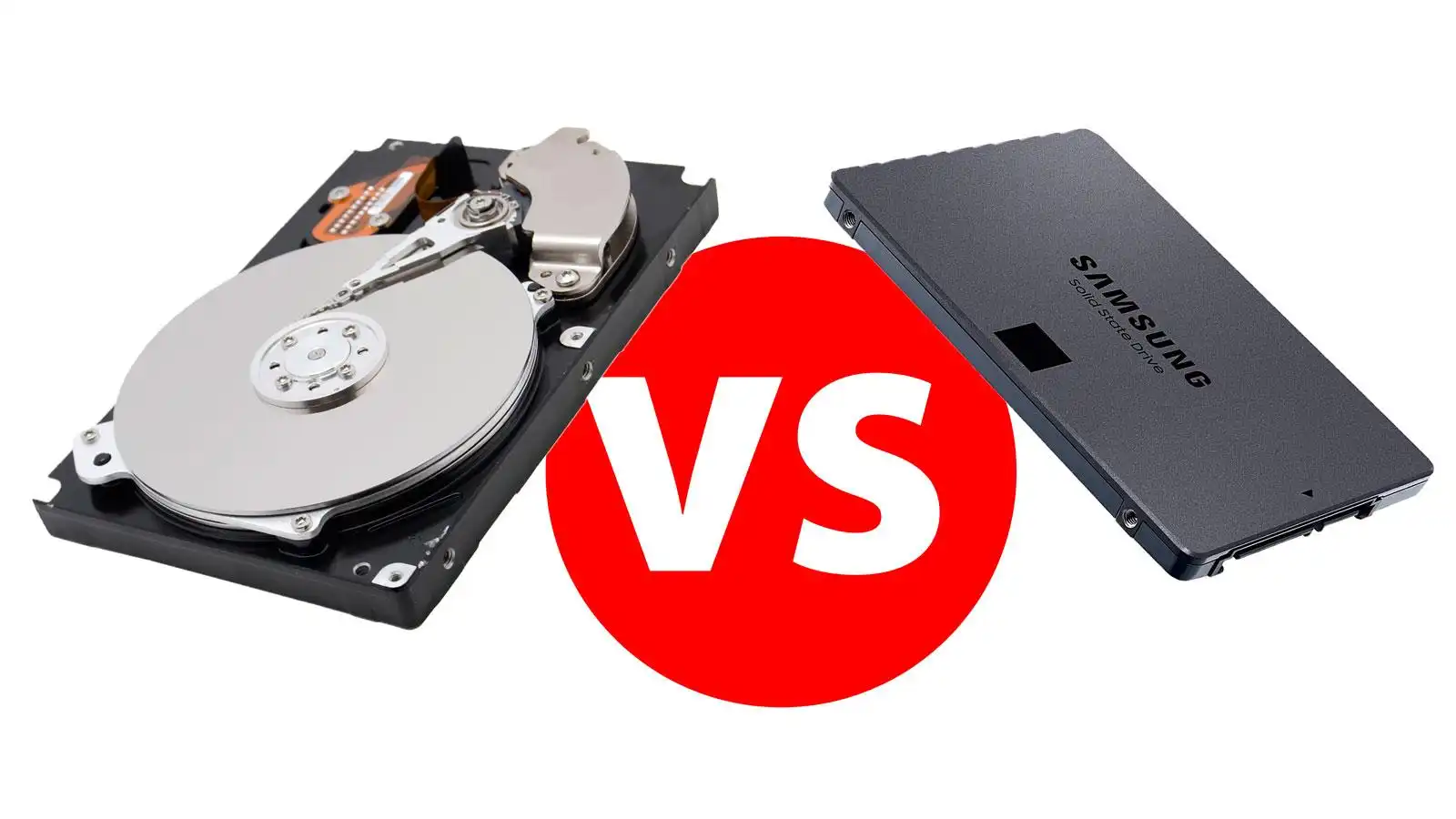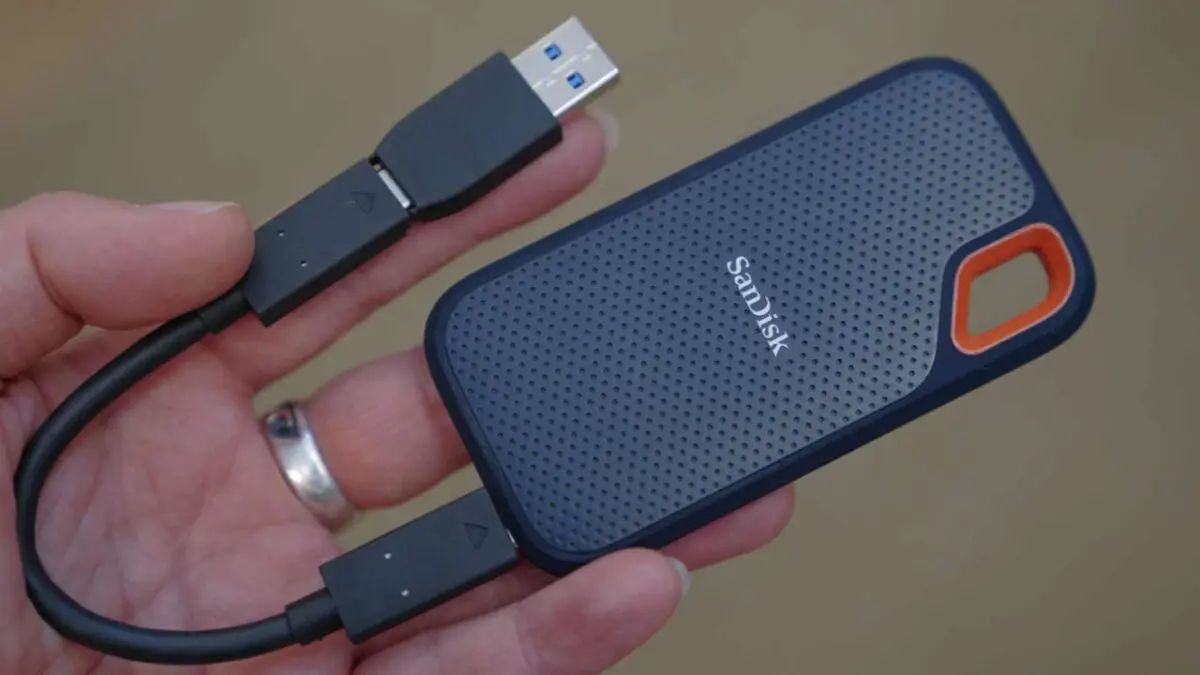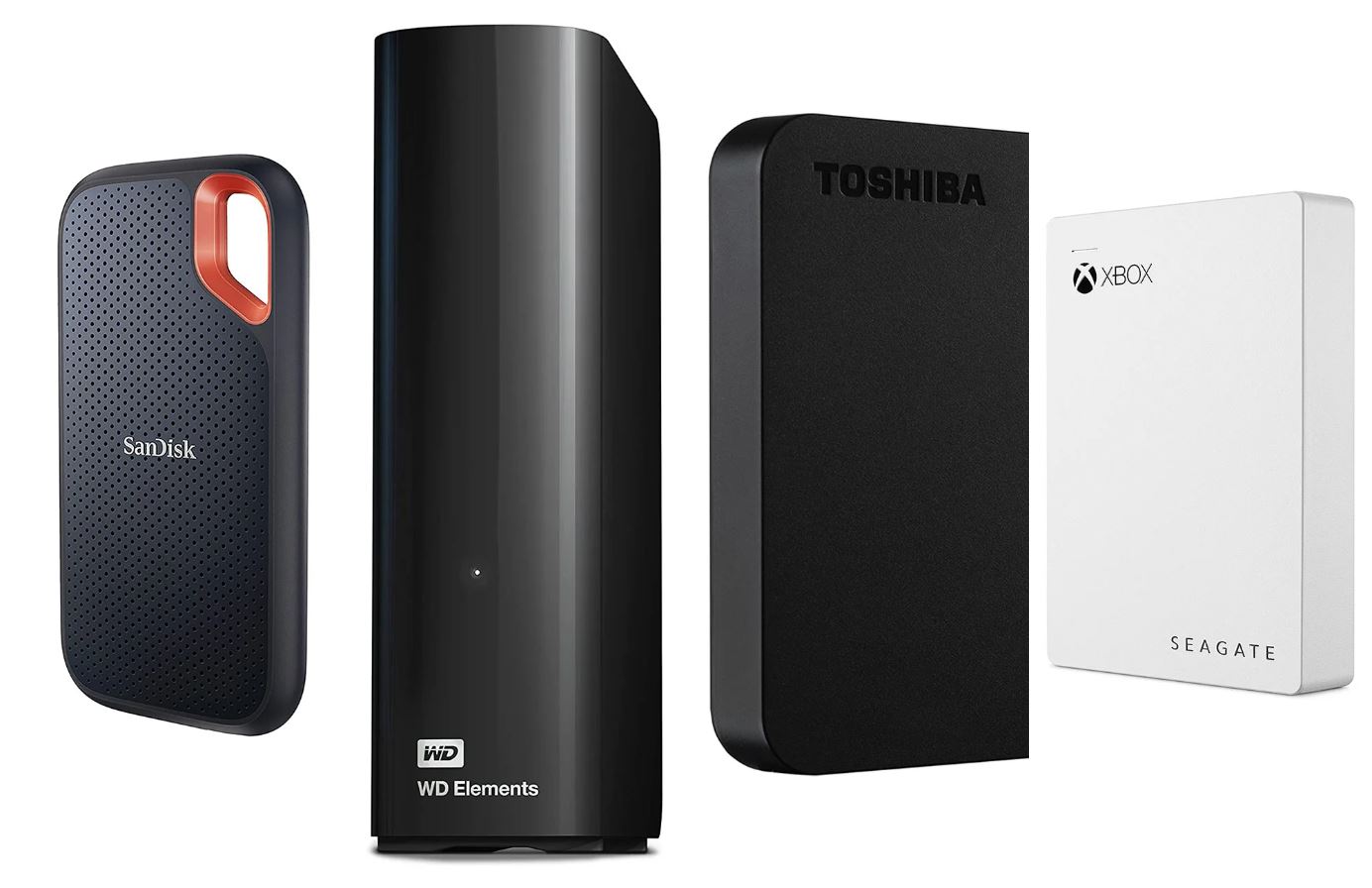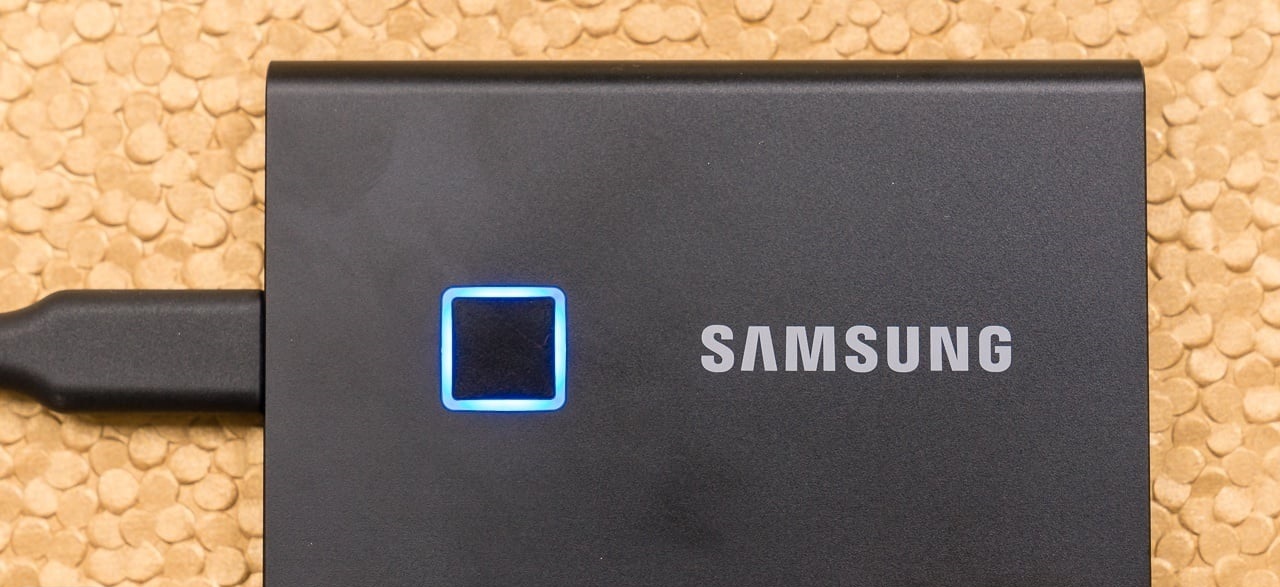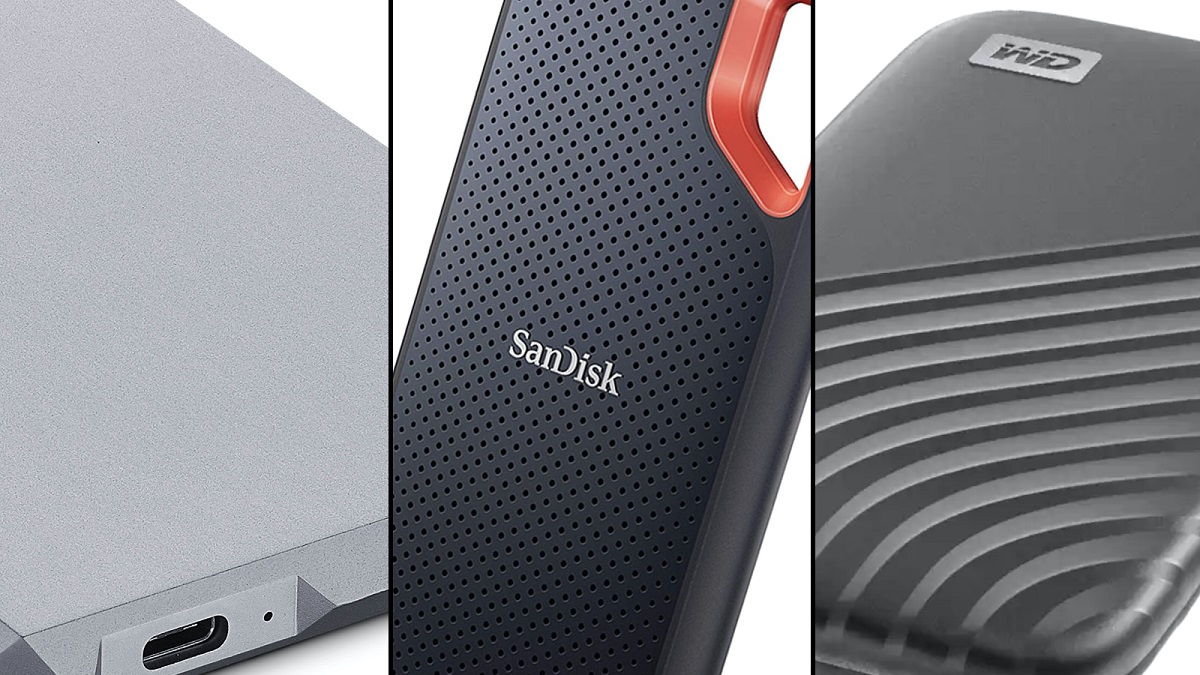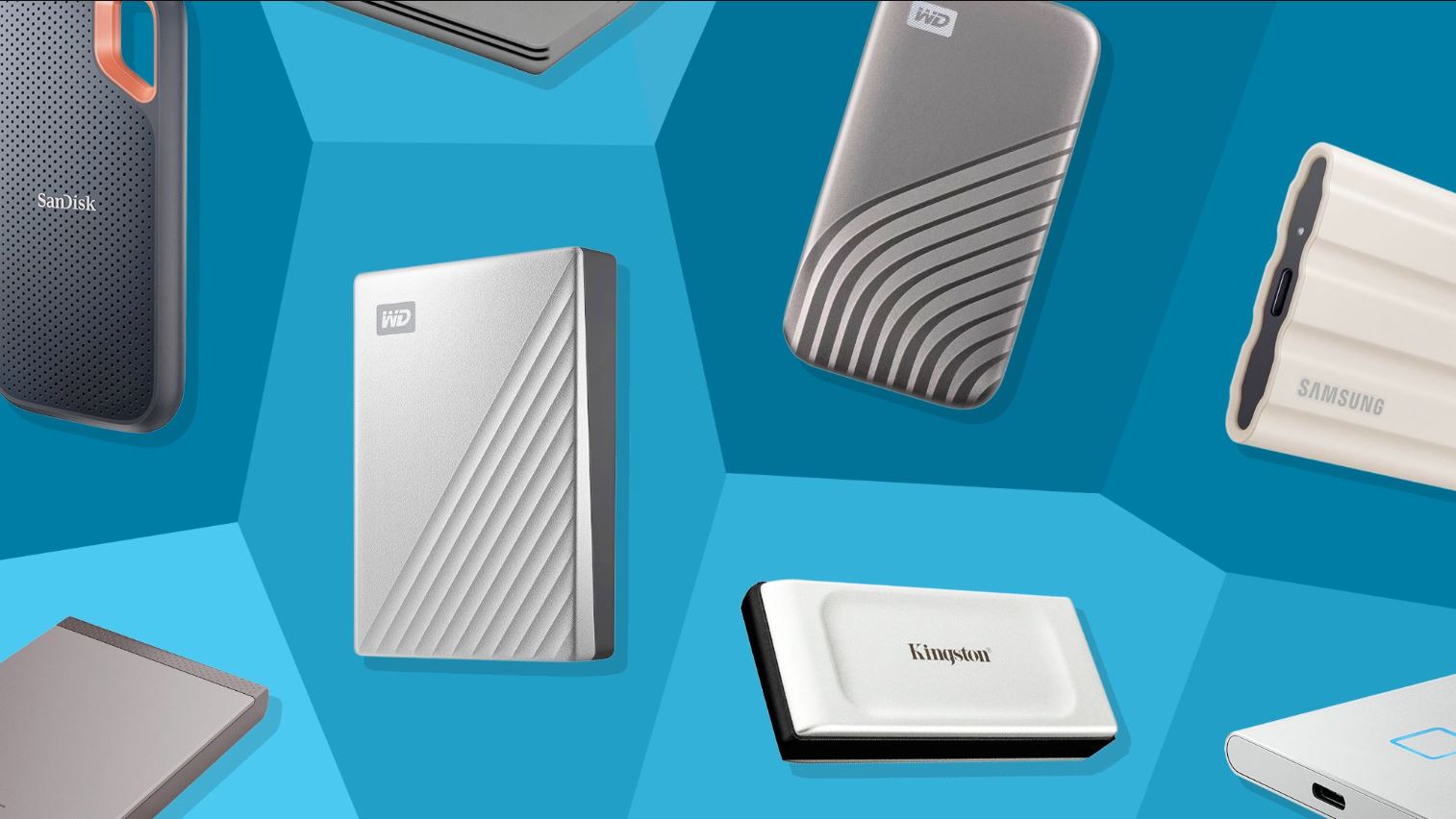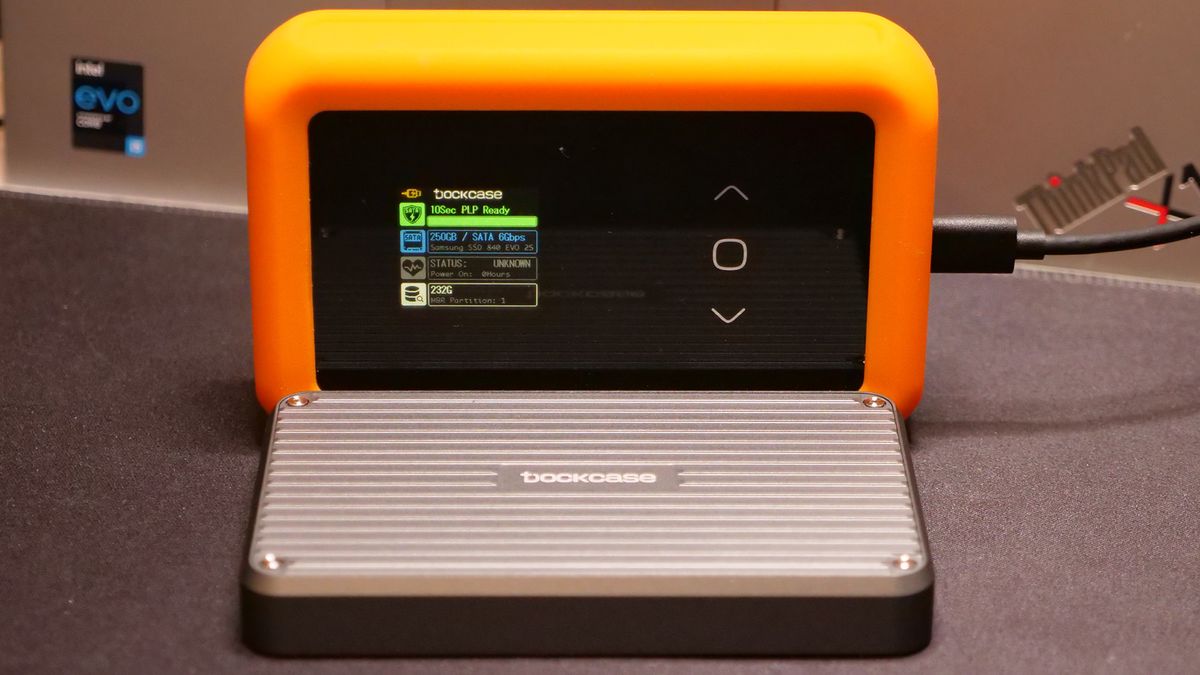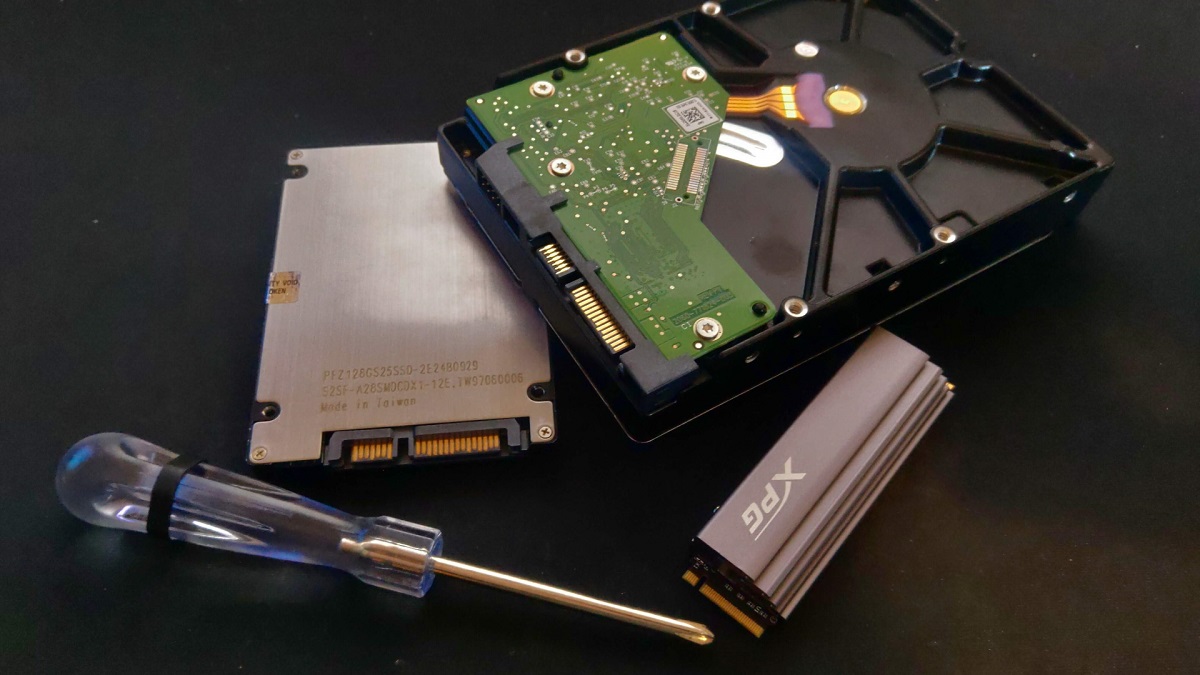Introduction
When it comes to storage options for your valuable data and files, two popular choices are external hard drives and solid-state drives (SSDs). Both of these devices provide a portable and convenient way to store and back up your data, but they differ in several aspects. Understanding the differences between external hard drives and SSDs can help you make an informed decision on which option suits your needs best.
An external hard drive is essentially a portable version of the hard drive that is typically found inside a computer. It uses magnetic spinning disks to store data, similar to the internal hard drive in your computer. On the other hand, an SSD is a newer technology that uses flash memory to store data, providing faster access speeds and improved durability compared to traditional hard drives.
In this article, we will explore the differences between external hard drives and SSDs, including their speed, lifespan, size and portability, power consumption, and price. By the end, you will have a clearer understanding of which storage solution is right for you and your specific needs.
What is an External Hard Drive?
An external hard drive is a portable storage device that connects to a computer or other devices through a USB or Thunderbolt port. It provides additional storage space and allows you to store and access your files, documents, photos, videos, and more. External hard drives are often used as a backup solution for important data or as a way to expand the storage capacity of a computer.
External hard drives consist of a casing that houses one or more traditional hard disk drives (HDDs). These HDDs use magnetic spinning platters and read/write heads to store and retrieve data. They are available in various storage capacities, ranging from a few gigabytes to multiple terabytes, depending on your needs.
One of the key advantages of external hard drives is their affordability. They offer a cost-effective way to add additional storage to your computer without having to upgrade the internal hard drive. Additionally, external hard drives are compatible with both Windows and Mac operating systems, making them a versatile storage solution for users of different platforms.
External hard drives are also fairly easy to use. You simply need to connect the drive to your computer using a USB or Thunderbolt cable, and it will be recognized as an external storage device. From there, you can transfer files to and from the drive, organize your data, and access your files whenever you need them.
Another advantage of external hard drives is their portability. They are typically compact and lightweight, making them convenient to carry around and use on the go. Whether you need to bring your files to a meeting, work on a project while traveling, or simply want to have your entire digital library at hand, an external hard drive enables you to have your data with you wherever you are.
Overall, external hard drives are reliable, inexpensive, and provide ample storage space for personal and professional use. They offer a straightforward and convenient way to store and access your data, making them a popular choice for individuals, students, professionals, and businesses alike.
What is an SSD?
An SSD, or solid-state drive, is a storage device that uses flash memory to store data. Unlike traditional hard drives, which use spinning disks and read/write heads, SSDs have no moving parts. Instead, they rely on integrated circuits to store and retrieve data quickly and efficiently.
SSDs offer several advantages over traditional hard drives. One of the main benefits is their speed. SSDs can access and transfer data much faster than traditional hard drives, resulting in quicker boot times, faster file transfers, and improved overall system performance. This is because there are no physical components that need to move to retrieve the data, as is the case with hard drives.
In addition to speed, SSDs are also more durable than hard drives. Since there are no moving parts, there is less risk of mechanical failure, such as a failed read/write head or damaged platter. This makes SSDs more resistant to physical shocks and vibrations, which can be especially useful for portable devices like laptops. The durability of SSDs can also lead to a longer lifespan compared to traditional hard drives.
Another advantage of SSDs is their compact size. SSDs are typically smaller and lighter than hard drives, which makes them ideal for use in thin and lightweight laptops and other portable devices. They also generate less heat and noise compared to hard drives, enhancing the overall user experience.
While SSDs offer numerous benefits, they do have a few downsides. One notable disadvantage is their higher cost per gigabyte compared to traditional hard drives. SSDs are generally more expensive, especially for higher storage capacities. However, the price has been decreasing over the years as SSD technology advances.
It’s also worth noting that unlike hard drives, SSD performance can degrade over time due to the nature of the flash memory. However, most modern SSDs implement technologies like wear leveling and garbage collection algorithms to mitigate this issue and prolong the drive’s lifespan.
Overall, SSDs are a significant advancement in storage technology, offering faster speeds, improved durability, smaller size, and reduced power consumption compared to traditional hard drives. These benefits make SSDs an attractive option for users who prioritize performance and reliability in their storage devices.
Differences in Speed
One of the major differences between external hard drives and SSDs is the speed at which they can access and transfer data. SSDs are significantly faster than traditional hard drives, offering a noticeable improvement in overall system performance.
SSDs use flash memory technology, which allows them to access data almost instantly. This means that files load faster, applications launch quicker, and the overall responsiveness of the system is enhanced. Whether you’re booting up your computer, transferring large files, or running demanding programs, an SSD can provide a significant speed boost compared to an external hard drive.
On the other hand, external hard drives rely on spinning disks and mechanical read/write heads, which introduces latency in accessing data. While modern hard drives have improved in terms of speed, they still can’t match the speed of SSDs. This can result in slower file transfers, longer load times for applications, and a generally less snappy user experience.
The difference in speed becomes particularly noticeable when it comes to tasks that involve random access, such as searching for specific files or accessing multiple files simultaneously. SSDs excel in random read and write operations, allowing for rapid access to scattered data across the drive. This can greatly benefit tasks that rely on quick data retrieval, such as video editing, gaming, or running virtual machines.
It’s important to note that the speed difference between external hard drives and SSDs can vary depending on the specific models and configurations. Solid-state drives with a higher data transfer rate can provide even faster performance, while external hard drives with higher RPM (rotations per minute) can offer improved speed compared to lower RPM models. However, as a general rule of thumb, SSDs are considered to be significantly faster than external hard drives.
If speed is a priority for your storage needs, such as for professional use or demanding tasks, investing in an SSD is likely to provide a notable performance boost. On the other hand, if you primarily use your storage for storing and accessing general files, such as documents or photos, the speed difference might not be as crucial, and an external hard drive could still serve you well.
Differences in Lifespan
When considering storage options, it’s important to take into account the lifespan of the device. The lifespan of an external hard drive and an SSD can differ due to the underlying technologies they utilize.
External hard drives, which rely on spinning magnetic disks, have a limited lifespan. The constant rotation of the disks and the mechanical read/write heads can lead to wear and tear over time. This can result in potential mechanical failures, causing data loss and the need for a replacement drive. While hard drives can last for several years with proper usage and maintenance, they are more prone to failure in the long run compared to SSDs.
On the other hand, SSDs have no moving parts, making them more durable and resistant to physical shocks and vibrations. This improved durability translates into a longer lifespan for SSDs. However, it’s worth noting that SSD lifespan can still be affected by the total amount of data written to the drive. Repeated and extensive data writing can gradually wear down the flash memory cells, potentially decreasing the drive’s lifespan.
Manufacturers address this potential issue through technologies like wear leveling and overprovisioning, which distribute data more evenly across the drive and reserve spare memory cells for wear leveling. These features help extend the lifespan of an SSD and maintain its performance over time.
When it comes to lifespan, it’s difficult to determine exact numbers as there are many variables involved, including usage patterns, storage conditions, and the quality of the drive. However, in general, SSDs tend to have a longer lifespan compared to external hard drives.
If longevity is a priority for your storage solution, an SSD might be a more reliable option. However, it’s important to remember that no storage device is immune to failure, and regular backups are essential to protect your data regardless of the type of storage you choose.
Ultimately, considering the lifespan of your storage device can help you make an informed decision on whether an external hard drive or an SSD is the right choice for your needs and the importance of data durability and longevity.
Differences in Size and Portability
When it comes to size and portability, there are notable differences between external hard drives and SSDs. These differences can play a significant role in the convenience and usability of the storage device.
External hard drives are typically larger and bulkier compared to SSDs. This is because they contain spinning disks and mechanical components that require more physical space. The larger form factor of external hard drives can make them less portable and more cumbersome to carry around. They often require an external power source and are better suited for stationary use, such as backup storage at home or in the office.
On the other hand, SSDs are much smaller and more compact in size. They are designed to be lightweight and easily fit in a pocket, bag, or even your laptop sleeve. The lack of moving parts allows for a sleek and portable design, making SSDs a popular choice for users who are constantly on the go and need to carry their data with them.
The smaller size and portability of SSDs make them ideal for travel, presentations, and working on the move. Whether you’re a student, a professional, or a frequent traveler, having a portable storage solution like an SSD allows you to easily access and transfer your files without the need for bulky external hard drives.
In addition to their size, another aspect to consider is the connectivity options. External hard drives typically use USB or Thunderbolt ports to connect to computers and other devices. While this offers compatibility with a wide range of devices, it can be less convenient if your device has limited or no USB ports available.
SSDs, on the other hand, often come with built-in USB or Thunderbolt connectors, eliminating the need for additional cables or adapters. Some SSDs even feature wireless connectivity options, allowing for even more flexibility and convenience when it comes to accessing your data.
Overall, the size and portability of a storage device can greatly influence its usability and convenience. If you require a storage solution that you can easily carry with you and have on hand at all times, an SSD would be a more suitable choice. However, if your storage needs are primarily for stationary use and you prioritize larger storage capacities, an external hard drive may still be a viable option.
Differences in Power Consumption
Power consumption is another factor to consider when comparing external hard drives and SSDs. The difference in power requirements can impact the convenience, reliability, and battery life of the devices they are connected to.
External hard drives typically require a separate power source as they rely on spinning disks and mechanical components. They often come with an external power adapter that needs to be plugged into an electrical outlet in order to operate. This additional power requirement can be inconvenient, especially when using the device in portable scenarios where access to a power source may be limited.
On the other hand, SSDs have lower power consumption compared to external hard drives. Since they have no moving parts, SSDs can operate efficiently with minimal power requirements. This reduced power consumption benefits portable devices, such as laptops and tablets, by helping to extend battery life and allowing for a longer duration of portable use.
The lower power consumption of SSDs also results in less heat generation compared to external hard drives. This can contribute to a cooler and quieter operation, as well as increased longevity for the device itself.
Moreover, some SSD models are specifically designed for ultra-low power consumption, known as “power-efficient” or “energy-efficient” SSDs. These drives are optimized for devices that prioritize longer battery life, such as laptops and mobile devices. They can provide even greater power efficiency, extending the runtime of the device and reducing the need for frequent recharging.
Therefore, if you frequently rely on battery-powered devices or seek a storage solution that consumes less power, an SSD is a better choice. Its energy-efficient operation ensures that your battery lasts longer, allowing you to work, play, or access your data without worrying about running out of power.
However, it’s important to note that the overall power consumption of your storage solution also depends on other factors, such as the power consumption of the device it is connected to and the usage patterns. Factors like data transfer rates and drive utilization can impact power consumption regardless of whether it is an external hard drive or an SSD.
Ultimately, taking power consumption into consideration can help you make an informed decision based on your specific needs and usage requirements, especially if you rely heavily on battery-powered devices or require prolonged portable use.
Differences in Price
Price is a significant consideration when choosing between an external hard drive and an SSD. There can be notable differences in the cost of these storage options, depending on various factors such as capacity, brand, performance, and technology.
Generally, external hard drives are more affordable than SSDs on a per-terabyte basis. Traditional hard drives offer a higher storage capacity at a lower cost, making them an economical choice for users who require large amounts of storage space, such as for media libraries or backup solutions.
On the other hand, SSDs are considered a more premium option, typically priced higher than external hard drives. The cost per terabyte for SSDs is often higher due to the more advanced and expensive flash memory technology they utilize. However, SSD prices have been decreasing over time as the technology becomes more widespread and manufacturing costs decrease.
Additionally, when comparing the price of SSDs, it’s important to note that different SSD models can vary significantly in terms of performance, durability, and brand reputation. High-performance SSDs, such as those designed for gaming or professional use, tend to come at a higher price point compared to entry-level SSDs.
When considering price, it’s crucial to evaluate your storage needs and budget. If you prioritize affordability and require a large storage capacity, an external hard drive may be the more cost-effective choice. However, if you prioritize performance, durability, and faster data access, and are willing to pay a premium for these features, then investing in an SSD may be worthwhile.
Ultimately, the price difference between external hard drives and SSDs can vary depending on factors such as storage capacity, brand, and technology. Assess your specific requirements and budget to determine which option provides the best value for your needs.
Conclusion
Choosing between an external hard drive and an SSD comes down to understanding the differences and considering your specific needs. Both options have their advantages and drawbacks, and it’s important to weigh these factors before making a decision.
If speed and performance are important to you, an SSD is the clear winner. SSDs offer significantly faster data access and transfer speeds, resulting in quicker boot times, faster file transfers, and a more responsive computing experience.
On the other hand, if you require a larger storage capacity at a more affordable price, an external hard drive may be the better choice. Hard drives provide more storage space for your money and are suitable for users with extensive storage needs, such as media libraries or backup solutions.
Consider the lifespan and durability of the storage device when making your decision. SSDs have no moving parts, making them more resistant to physical shocks and vibrations. They also tend to have a longer lifespan compared to external hard drives, although both types of storage can fail over time.
Size and portability also play a crucial role, especially for users on the go. If you need a compact and lightweight storage solution that you can easily carry with you, an SSD is the ideal choice. External hard drives, on the other hand, are bulkier and require a separate power source, making them better suited for stationary use.
Power consumption is another important consideration, especially for users who frequently rely on battery-powered devices. SSDs consume significantly less power compared to external hard drives, which can help extend battery life and provide a more energy-efficient storage solution.
Finally, take price into account when weighing your options. External hard drives are generally more affordable on a per-terabyte basis, offering a cost-effective solution for users with extensive storage needs. SSDs, although more expensive, provide faster performance and greater durability, making them worthwhile investments for users who prioritize speed and reliability.
Ultimately, the choice between an external hard drive and an SSD depends on your unique needs and priorities. Consider factors such as speed, lifespan, size, power consumption, and price to determine which option offers the best fit for your storage requirements. Whether you opt for the speed and performance of an SSD or the affordability and larger capacity of an external hard drive, either choice will provide a valuable storage solution for your data and files.







